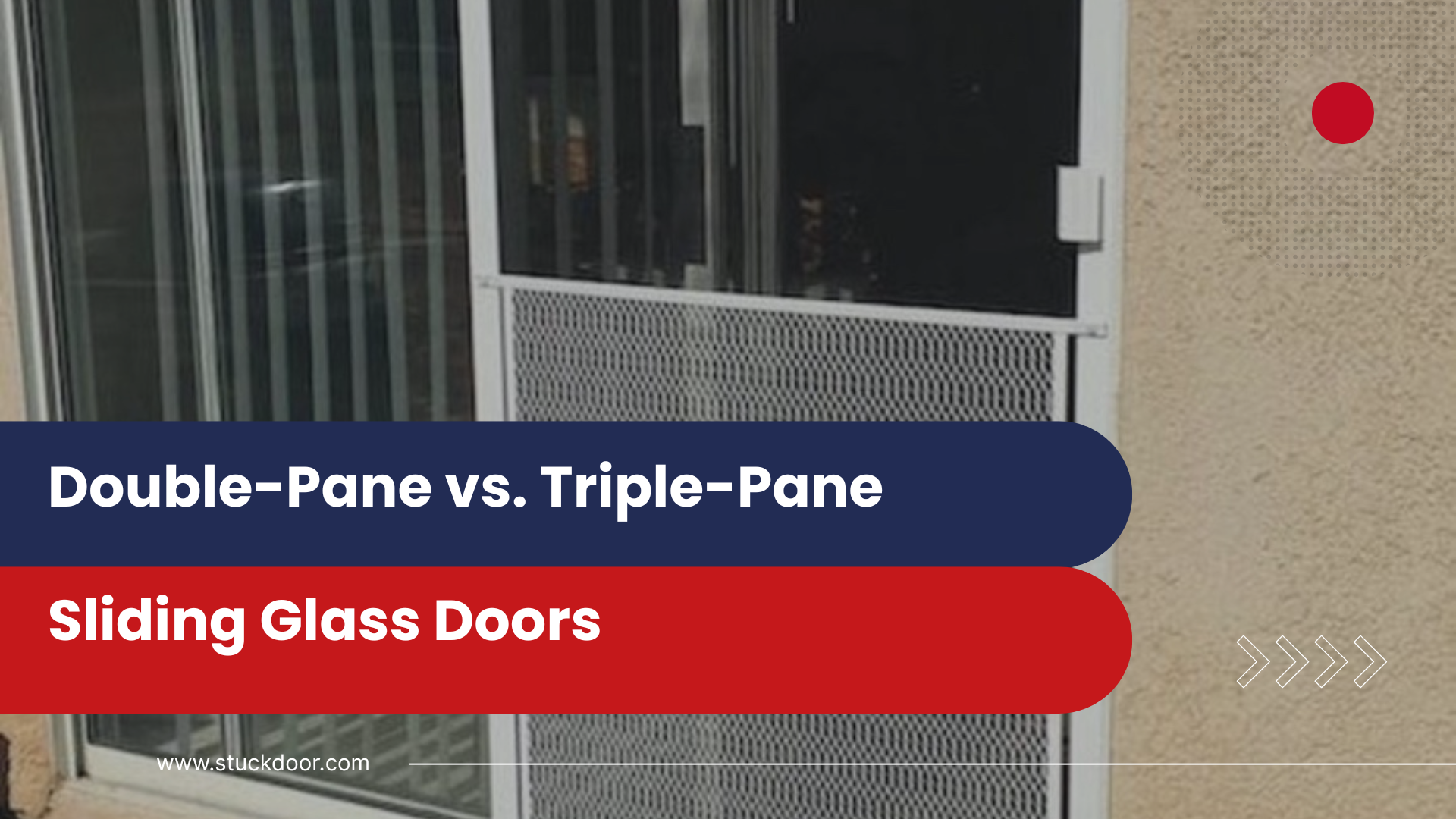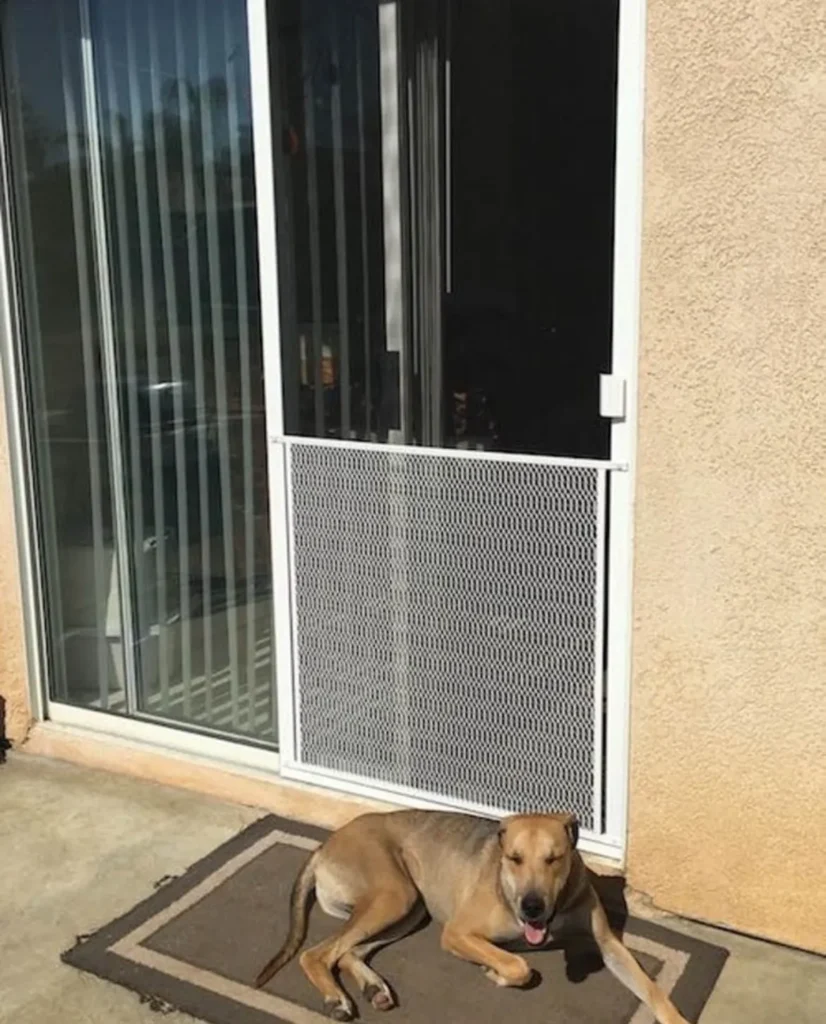
You’re standing in the showroom, looking at sliding glass door options, and the salesperson just mentioned “triple-pane glass” with a significantly higher price tag. Your immediate thought: “Is this really necessary, or are they just trying to upsell me?”
It’s a fair question. Triple-pane sliding glass doors can cost 25-50% more than double-pane options. That’s not pocket change. But here’s the thing—whether that extra cost is worth it depends entirely on your specific situation, priorities, and yes, where you live.
Let’s cut through the marketing speak and give you the honest comparison you need to make the right choice for your Central Florida home.

Alt text: “Cross-section comparison showing double-pane versus triple-pane sliding glass door construction and insulation layers”
Before we dive into benefits and drawbacks, let’s make sure we’re speaking the same language.
Double-pane, or double-glazed doors, feature two layers of glass with a sealed space between them. This space is typically filled with:
The two panes create an insulating barrier that significantly outperforms old single-pane doors.
Triple-pane doors feature three layers of glass compared to double-pane’s two, creating two sealed spaces instead of one. Each space is gas-filled for maximum insulation.
The construction: outer pane + gas space + middle pane + gas space + inner pane.
However, this configuration adds considerable thickness which can be harder to accommodate when installing large sliding door panels.
The fundamental trade-off: More layers mean better performance but also more weight, thickness, and cost.
This is where most of the marketing hype focuses. Let’s break down what the numbers actually mean for you.
Triple-pane windows can be up to 20 percent more efficient than double-pane options in ideal conditions. That sounds impressive, but context matters.
In Central Florida’s climate:
The reality check: The third pane doesn’t really make that dramatic of a difference in moderate climates. In Central Florida, where we don’t experience extreme cold, the energy savings are less dramatic than in northern climates.
[Image suggestion: Thermal imaging comparison showing heat transfer through double vs triple-pane]
Alt text: “Thermal imaging comparison showing heat transfer differences between double-pane and triple-pane sliding glass doors”
Let’s talk real numbers for a standard 6-foot sliding glass door in Central Florida:
Average annual cooling costs for the door area:
Annual savings of triple over double: ~$15/year
If triple-pane costs $800-$1,500 more than double-pane, you’re looking at a 50-100 year payback period based purely on energy savings. That’s not a compelling financial argument.
However: If you run your AC constantly, have large door installations, or your doors face direct afternoon sun, your savings could be higher.
Here’s where triple-pane doors legitimately pull ahead—and this benefit matters regardless of climate.
Triple-pane doors feature improved noise reduction over double-pane because they have three layers of glass separated by insulating gas-filled spaces, which dampen sound transmission and reduce vibrations.
Real-world noise reduction:
That extra 10-15 decibel reduction is significant. It’s roughly the difference between hearing clear conversation from outside versus hearing muffled background noise.
When this matters most:
Central Florida considerations: If your sliding doors face a pool area where neighborhood kids play, or if you’re near International Drive or other high-traffic areas, the sound insulation alone might justify triple-pane.
[Image suggestion: Decibel comparison chart showing noise levels blocked by each door type]
Alt text: “Sound insulation comparison chart showing decibel reduction levels for double-pane versus triple-pane sliding doors”
More glass means stronger doors, right? Well, yes and no.
Triple-pane doors are more durable and resistant to harsh weather than double-pane options. The extra glass layer provides:
For Central Florida’s hurricane concerns, this is worth considering.
Here’s what manufacturers don’t emphasize: triple-pane doors are significantly heavier.
Weight comparison (standard 6-foot door):
What this means practically:
After 14 years installing both types, we’ve noticed triple-pane doors require roller replacements about 30% more frequently due to the additional weight stress.
Installing triple-pane doors isn’t as simple as swapping one for the other.
Triple-pane’s considerable thickness can be harder to accommodate when installing large sliding door panels.
Potential issues:
Installation cost differences:
Triple-pane doors require beefier hardware:
These aren’t optional upgrades—they’re necessary to handle the weight properly.
[Image suggestion: Professional measuring door frame opening for triple-pane installation]
Alt text: “Professional installer measuring door frame to verify compatibility with triple-pane sliding glass door thickness”
Let’s lay out all the costs, not just the sticker price.
Sliding glass patio door costs typically range from $2,000-$4,000, with variations based on pane type:
Standard 6-foot two-panel door:
8-foot three-panel door:
Premium difference: 25-50% higher for triple-pane
Maintenance costs over 15 years:
Energy savings over 15 years:
Resale value impact:
Total cost of ownership (15 years, including installation):
Net difference: $2,000-$2,500 over 15 years for minimal energy savings but significant noise reduction and durability improvements.
This is the million-dollar question for Central Florida homeowners.
You should consider triple-pane if:
Double-pane is probably sufficient if:
The honest truth from our experience: Most Central Florida homeowners are perfectly satisfied with quality double-pane doors. The climate doesn’t demand triple-pane the way northern climates do.
[Image suggestion: Map showing climate zones with recommendations for door types]
Alt text: “Climate zone map showing recommended pane types for different regions with Florida highlighted”
Sometimes, the focus on double versus triple distracts from features that deliver better value.
Low-E coatings:
Impact-resistant glass:
Gas fill quality:
Frame material:
Pro tip: A high-quality double-pane door with Low-E coating and argon gas often outperforms a basic triple-pane door without these features—and costs less.
After installing hundreds of both types across Central Florida, here’s our honest recommendation framework:
✓ Budget is a significant concern
✓ You want the best cost-to-performance ratio
✓ Your home isn’t in a high-noise area
✓ You’re not in a coastal high-wind zone
✓ You’ll invest savings in other home improvements
✓ You prioritize practical value over premium features
This represents about 75% of our Central Florida installations.
✓ Noise reduction is a top priority
✓ You’re in a coastal or high-wind area
✓ Budget allows for premium features
✓ You’re building a luxury home
✓ You plan to stay in your home long-term (15+ years)
✓ You want absolute best performance regardless of ROI
✓ You value the “peace and quiet” premium
This represents about 25% of our installations, typically in luxury homes or specific high-noise locations.
[Image suggestion: Decision tree flowchart for choosing between double and triple-pane]
Alt text: “Decision flowchart helping homeowners choose between double-pane and triple-pane sliding glass doors based on priorities”
Don’t just take the salesperson’s word for it. Ask these specific questions:
There’s no universally “right” answer to the double versus triple-pane question. It depends on your priorities, budget, and specific situation.
What we can tell you after 14 years in Central Florida: the vast majority of homeowners who choose quality double-pane doors are completely satisfied. Those who spring for triple-pane typically do so for sound reduction or the premium feel, not energy savings alone.
The worst decision you can make is choosing cheap, poorly made double-pane over quality triple-pane, or vice versa—going triple-pane but skimping on proper installation and hardware.
The best decision matches your door choice to your actual needs, with quality materials and professional installation regardless of which pane count you choose.
Ready to discuss which option is right for your Central Florida home? Contact Posada Remodeling & Design for a personalized consultation. We’ll assess your specific situation—your location, noise concerns, budget, and goals—and give you honest guidance on which option delivers the best value for YOUR home. No pressure, no upselling, just 14 years of experience helping Central Florida homeowners make smart decisions.
Let’s find the perfect sliding glass door solution together.
Stuck Door helps fix and install sliding doors in Winter Garden, Clermont, Windermere, and across Central Florida. Our friendly expert technicians have years of experience making sure homes and businesses have reliable doors that work perfectly.
Windermere • Doctor Phillips • Lake Nona • Winter Garden • Clermont • Minneola • Groveland • Ocoee • Apopka • Winter Park • Maitland • Kissimmee • Horizon West • Altamonte Springs
Sliding glass door experts, built for Florida homes—call us today.